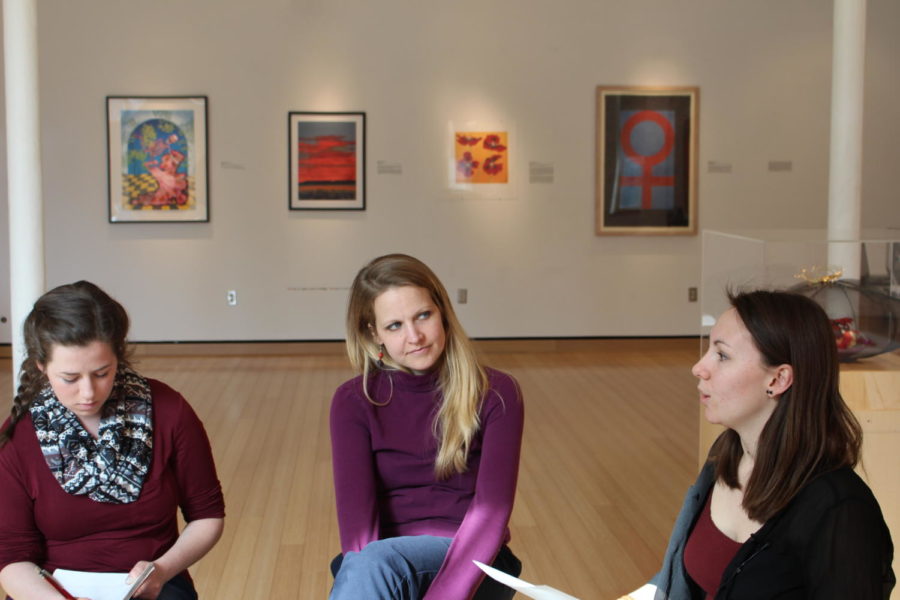Arts + Issues explores connections between art and executive orders
Aspen Pflanz (right) conducts a conversation covering presidential executive orders and their opinions on them during the Art + Issues event at the Christian Petersen Art Museum Feb. 27.
February 28, 2017
University Museum’s Art + Issues forum created a space for conversation about current events Monday at Morrill Hall. This month’s featured topic was executive orders and how the public perceives them.
Executive orders have been the subject of debate in America since President Trump’s recent executive order banning citizens of seven countries around the world in an effort to prevent terrorism. Most executive orders are created immediately after a president takes office, which is done to allow for easier passage of legislation later on in the president’s term.
“It’s seen as a fulfillment of campaign promises, and seen as taking action,” said Nancy Gebhart, educator of visual literacy and learning for University Museums.
Aspen Pflanz, senior in history at Iowa State and museum intern, noted her difficulty accepting the immigration order and recounted a debate with a friend about her stance on the issue.
“After I thought about it, I realized that I’m not mad that the order is being made, but I’m mad at the content,” Pflanz said.
She said that while the president shouldn’t create laws, “we only get upset when the executive orders are something we disagree with.”
Erin O’Malley, campus outreach coordinator for University Museums, compared the recent order to the Japanese internment in World War II, which was also created by an executive order.
“Historical perspectives change over time,” O’Malley said.
The forum addressed misconceptions about executive orders, including whether or not the orders were absolute. Congress is able to overturn executive orders after a debate process, and courts are also able to block orders, such as with President Trump’s immigration ban.
In addition, not all executive orders deal with monumental issues. Executive orders and memoranda can be ordered to commemorate events or create holidays, like in the case of Thanksgiving. Many more executive orders are created during times of war or economic distress, and the amount declared by each president varies. President Franklin Roosevelt holds record for most executive orders, declaring 3,721 orders during his 4 terms as president.
During the Great Depression, an executive order by Roosevelt created the Works Public Administration to help create jobs for struggling artists. The print entitled “Pouring Steel” by Minetta Good was created through this project and depicted steelworkers pouring steel into molds.
“The program wanted artists to create ‘images of the American scene’, and hoped to inspire people to get out of the funk of the Great Depression and get back to work,” Gebhart said.
Iowa State purchased 40 works from the WPA in the 1930s, and Gebhart noted the importance of funding arts programs, drawing parallels to the recent threat of funding cuts to the National Endowment for the Arts.
“Art is inspirational and transformational, and it was a crucial step in helping every student have a well-rounded experience and expire to art,” Gebhart said. “Art exposes students to critical thinking and dialogue about the subjects.”







